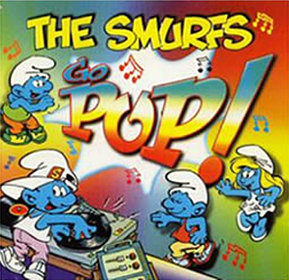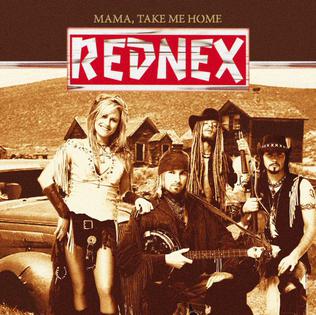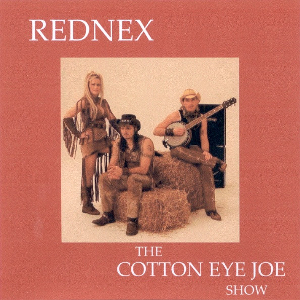Related Research Articles

"Jump Jim Crow", often shortened to just "Jim Crow", is a song and dance from 1828 that was done in blackface by white minstrel performer Thomas Dartmouth "Daddy" Rice. The song is speculated to have been taken from Jim Crow, a physically disabled enslaved African-American, who is variously claimed to have lived in St. Louis, Cincinnati, or Pittsburgh. The song became a 19th-century hit and Rice performed it all over the United States as "Daddy Pops Jim Crow".
"Scarborough Fair" is a traditional English ballad. The song lists a number of impossible tasks given to a former lover who lives in Scarborough, North Yorkshire. The "Scarborough/Whittingham Fair" variant was most common in Yorkshire and Northumbria, where it was sung to various melodies, often using Dorian mode, with refrains resembling "parsley, sage, rosemary and thyme" and "Then she'll be a true love of mine." It appears in Traditional Tunes by Frank Kidson published in 1891, who claims to have collected it from Whitby.

Rednex is a Swedish musical group whose style is a mix of American country music and modern Eurodance, with their appearance and stage names taking inspiration from the American redneck stereotypes. The band originally consisted of the lead singer Mary Joe, alongside Bobby Sue, Ken Tacky, Billy Ray and Mup. Pat Reiniz also served as the band's producer. The band has gone through multiple lineup changes throughout its existence, with none of the members having an uninterrupted tenure.
"Jimmy Crack Corn" or "Blue-Tail Fly" is an American song which first became popular during the rise of blackface minstrelsy in the 1840s through performances by the Virginia Minstrels. It regained currency as a folk song in the 1940s at the beginning of the American folk music revival and has since become a popular children's song. Over the years, several variants have appeared.
In the folk tradition, there are many traditional blues verses that have been sung over and over by many artists. Blues singers, who include many country and folk artists as well as those commonly identified with blues singers, use these traditional lyrics to fill out their blues performances. Artists like Jimmie Rodgers, the "blue yodeler", and Big Joe Turner, "the Boss of the Blues" compiled virtual encyclopedias of lyrics. Turner reputedly could sing the blues for hours without repeating himself.

The Smurfs Go Pop! is an album of songs by The Smurfs, released in 1996. Most of the songs are cover versions of existing songs with altered lyrics.

The Best of the West is the title of the first compilation album released by Swedish dance group Rednex compiling almost all previously released Rednex singles, except the promotional single "Riding Alone". The album is the second and final release through Jive Records.

"Fe Fi (The Old Man Died)", or simply "Fe Fi", is a country song by the Swedish band Rednex. It has been released in November 2006 through Pyjama Records as the second single of their independently released third studio album The Cotton Eye Joe Show.

"Football Is Our Religion" is a country-dance song by the Swedish band Rednex, released in 2008 via Universal Records, as the fifth single of their independently released third studio album The Cotton Eye Joe Show. The song serves as the unofficial song to UEFA Euro 2008 which took place in Austria and Switzerland in June of that year.

"Looking for a Star" is a country-dance song by the Swedish band Rednex, released in 2007 via MMS Records, as the fourth single of their independently released third studio album The Cotton Eye Joe Show.

"Anyway You Want Me" is a country-dance song by the Swedish band Rednex, released on March 7, 2007 via Universal Records, as the third single of their independently released third studio album The Cotton Eye Joe Show.

"Li'l Liza Jane", also known as "Little Liza Jane","Liza Jane", and "Goodbye Liza Jane", is a song dating back at least to the 1910s. It has become a perennial standard both as a song and an instrumental in traditional jazz, folk music, and bluegrass, and versions have repeatedly appeared in other genres including rock and roll. Numerous scholars and musicologists have written about the song, and it is one of the standards of the New Orleans brass band tradition.

Battery Records was an American record label that served as the dance sublabel of Jive Records, and was active for a short time during the mid-1990s. The label was mostly known for releasing music by the Swedish Eurodance group Rednex in North America, namely its novelty hit "Cotton Eye Joe", as well as Insane Clown Posse's third studio album, Riddle Box. The Battery Records name was later revived by Sony Music Entertainment in 2008 with a focus on hip hop music.
"Pick a Bale of Cotton" is a traditional American folk song and work song first recorded by Texas inmates James "Iron Head" Baker (1933) and Mose "Clear Rock" Platt (1939) and later popularized by Lead Belly. Johnny Cash, as well as others, have released adaptations of the song.

Anders Lundström is a Swedish songwriter and record producer. He is also a country recording artist who has released in January 2013 an album Stay True with the stage name MAV. At various times earlier in his career he was also known as A.L. Sweet, Lucka and during his Rednex days (2006–2008) as Maverick.

"Cotton Eye Joe" is a song by Swedish Eurodance group Rednex, released in August 1994 by Jive and Zomba as the first single from their debut studio album, Sex & Violins (1995). Based on the traditional American folk song "Cotton-Eyed Joe", it combines the group's style with traditional American instruments such as banjos and fiddles. The song was written by Janne Ericsson, Örjan Öban Öberg and Pat Reiniz, and produced by Reiniz. The vocal verses are performed by Annika Ljungberg, while the "Cotton Eye Joe" chorus is sung by Göran Danielsson, who never appears in the music video for the song, directed by Stefan Berg. It was a number one hit in at least eleven countries, and reached numbers 25 and 23 on the US Billboard Hot 100 and Cash Box Top 100. In 2002, "Cotton Eye Joe" was remixed in a new dance version, and was released on Rednex's first greatest hits album, The Best of the West (2002).

Inbred with Rednex, sometimes misread as "In Bred with Rednex", is the first EP by Swedish dance group Rednex. The album was recorded and released in Germany in 1995 through BMG Interactive.

"Mama, Take Me Home", sometimes "Mama Take Me Home", is a song by Swedish dance group Rednex. It has been released in 2006 through M&L Records as the first single of their independently released third studio album The Cotton Eye Joe Show. The song marks the first release with Annika Ljungberg, who rejoined the band.

The Cotton Eye Joe Show is the third studio album by Swedish dance group Rednex. It has been independently released in 2009 in the Netherlands via Lek Records. It marks the second release to feature original lead singer Annika Ljungberg, who rejoined Rednex and replaced the previous female vocalist Julie-Anne Tulley, when she departed from the group. On January 1, 2009, however Ljungberg again left the band after the release due to the ending of Ljungberg's management licence, when control of the Rednex brand returned to the band's founders.
The discography of Rednex, a Swedish dance group, consists of three studio albums, two compilation albums, one extended plays, 18 singles, including one as featured artist, 9 promotional singles, and 17 music videos, including one as featured artist. The first Rednex release was the debut studio album Sex & Violins in 1995, preceded by the massive chart hits "Cotton Eye Joe", a cover version, and "Old Pop in an Oak", both released in 1994. This success was followed with the sophomore release Farm Out in 2000, including the hit single "The Spirit of the Hawk". The album Best of the West, their first compilation album, followed in 2002. In 2012, a studio album titled Saturday Night Beaver was planned, but remains shelved.
References
- ↑ Everett, Holly: "The Many Lives of 'Cotton Eyed Joe'", Canadian Society for Traditional Music Conference, 2002, Memorial University, St. John's, Newfoundland.
- ↑ Scarborough, Dorothy; Ola Lee Gulledge (1925). On the Trail of Negro Folk-songs. Harvard University Press. p. 289. ISBN 0-674-01262-3 . Retrieved March 3, 2011.
He said he had known it from his earliest childhood and had heard the slaves sing it on the plantations.
- ↑ Lloyd Shaw, The Round Dance Book, The Caxton Printers, Ltd, 1948, p. 314. No ISBN or catalogue number.
- ↑ "Information at The Fiddler's Companion". Ibiblio.org. Retrieved 2014-03-31.
- ↑ Mary Ellen Snodgrass (8 August 2016). The Encyclopedia of World Folk Dance. Rowman & Littlefield Publishers. p. 68. ISBN 978-1-4422-5749-8.
- ↑ Pyrnelle, Louise Clarke (1910). Diddie, shoots, and Tot: or, Plantation child-life. Harper and Brothers. p. vi. ISBN 9781421967509 . Retrieved March 3, 2011.
The stories, plantation games, and Hymns are just as I heard them in my childhood
- ↑ Pyrnelle, Louise Clarke (1910). Diddie, Dumps, and Tot: or, Plantation child-life. Harper and Brothers. pp. 135–36. Retrieved March 3, 2011.
Cotton eyed Joe.
- ↑ Brotherhood of locomotive firemen and enginemen's magazine. Vol. 8. Brotherhood of Locomotive Firemen. 1884. p. 534. Retrieved March 3, 2011.
- 1 2 Dorothy Scarborough, assisted By Ola Lee Quiledge (1925). "On The Trail of Negro Folk-Songs-online book. A collection of negro folk songs with lyrics, sheet music & commentaries". Traditionalmusic.co.uk. pp. 69–70. Retrieved 2014-03-31.
- 1 2 3 Dance Across Texas Betty Casey, University of Texas Press, 1985, p. 17. ISBN 0-292-71540-4
- ↑ Harris, Pittman, Waller, Dance a While. Handbook of Folk, Square, and Social Dancing. 1950, 1955, 1964, 1968. Burgess Publishing Company, Fourth Edition, p. 151.
- ↑ "Grateful Dead Family Discography:Cotton-Eyed Joe". Deaddisc.com. Retrieved 2014-03-31.
- ↑ Bill C. Malone, Don't Get above Your Raisin′, University of Illinois Press, 2001, p. 313. ISBN 0-252-02678-0
- ↑ "Honky Tonks, Hymns, & the Blues". Honkytonks.org. Retrieved 2014-03-31.
- ↑ Albert and Josephine Bulter, Encyclopedia of Social Dance, New York: Albert Bulter Ballroom Dance Service. New York, New York, 1975.
- ↑ "Lyrics to If You're Gonna Play In Texas (You Gotta Have A Fiddle In The Band)". Genius.com. Retrieved 2024-04-28.
- ↑ "Cotton Eye Joe – Rednex". tralala.gr. Archived from the original on 2012-06-25. Retrieved 2014-03-31.
- ↑ "COLUMBIA 78rpm numerical listing discography: 15000D series". 78discography.com.
- ↑ The Journal of American Folk-lore. American Folk-lore Society. 1965.
- ↑ Dean Tudor (1983). Popular Music: An Annotated Guide to Recordings . Libraries Unlimited. ISBN 978-0-87287-395-7.
- ↑ Charles K. Wolfe (March 1997). The devil's box: masters of southern fiddling. Country Music Foundation Press. ISBN 9780826512833.
- ↑ "Fiddlesessions.com". fiddlesessions.com.
- ↑ Covers, Ch. 1, 2016-07-29, retrieved 2018-08-30
- ↑ "Cotton Eyed Joe (The Murder Ballad)". YouTube .